How did people love in the past, without modern telecommunications, cars and contraception? One view is found in MS 14647: one hundred letters 1864–1898, sent by goldminer Lawrence Chubb to his family in England. Within them is a perfect old-time love story, suitable for a short film.
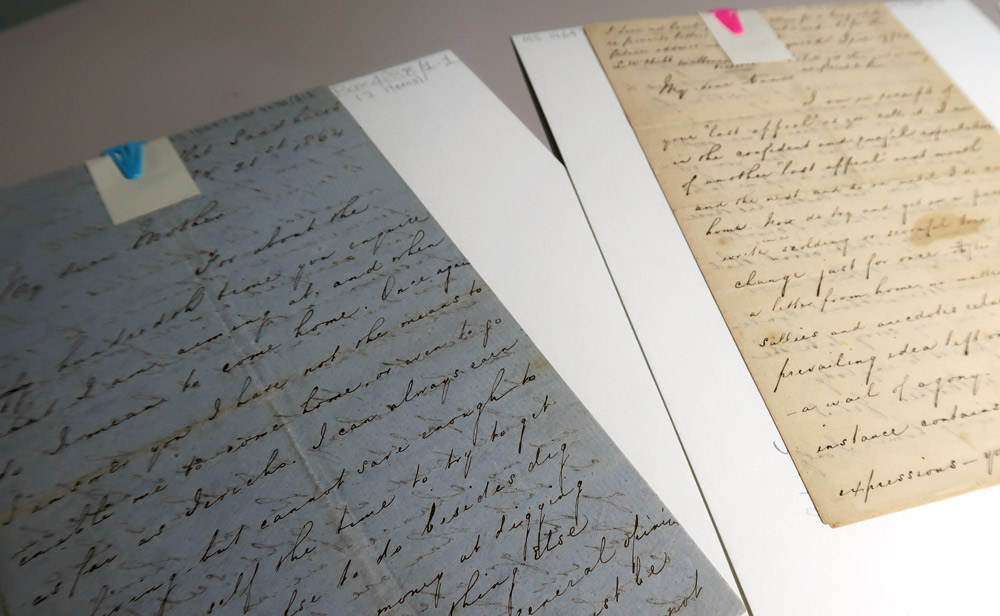
It began with Chubb in Bendigo, sending a Valentine to the teenage Esther Lydia Collins, living in the mining township of Jericho (Wehla), some 60 kilometres away:
I fear I am out of Esther’s good books
Wrote Chubb to his sister in England.
Last week I sent her a love of a Valentine all lace and silver gilt, enough to penetrate the heart of a summer cabbage
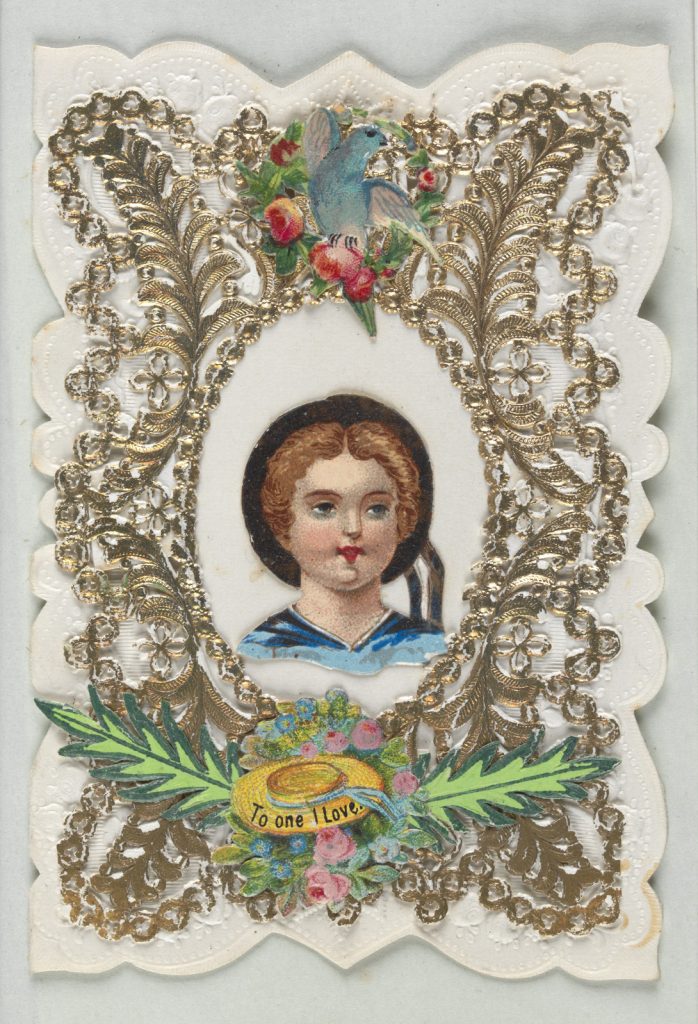
and that is the last she shall hear from me unless she writes. I have been a year away from her and perhaps she thinks that is long enough to wait. And she would be in the right of it. Were I a young woman on no consideration would I marry a gold miner.
Chubb, then 31, was articulate, intelligent, even radical:
The tendency of capital is to make slaves of Britons, to grind labour down to as near as possible to starvation point. Never mind, we shall all do well yet and keep pigs.
He had mixed luck with goldmining, and could not afford to return home to England. In any case he saw the attractions of Victoria’s eight-hour work day. He also saw the attractions of young women other than Esther. Being a decent sort, Chubb determined to return Esther’s letters to her. He could have simply mailed them but thought to do it in person. Now his trip would be less than an hour by car, but via horse-power or on foot was arduous and slow.
So one fine day I cleaned myself, put Esther’s letters in my pocket, jumped in the coach and before sunset was in Inglewood […] I had a seven mile walk before me.
By the time he arrived in Kingower he could see by starlight only. He broke into the house of an absent friend, one Ned the Poet, to sleep, but got fleabitten for his pains. Next morning he trod the footpath over the granite ranges to Jericho. Sentimental memories returned:
I halted in the spot where I parted from Esther on a moonlight night twenty months before – at the foot of a steep ravine – a little rivulet making its way among huge granite boulders – Silver wattles laden with yellow blossom charged the air with perfume – the heavy timber growing on the precipitous sides of the ravine – combined to form a scene calculated to delight the heart of a lover of the picturesque. I lit my beloved pipe and sat down to consider, and arrived at the conclusion that I was an ill used individual and didn’t care for her a bit.
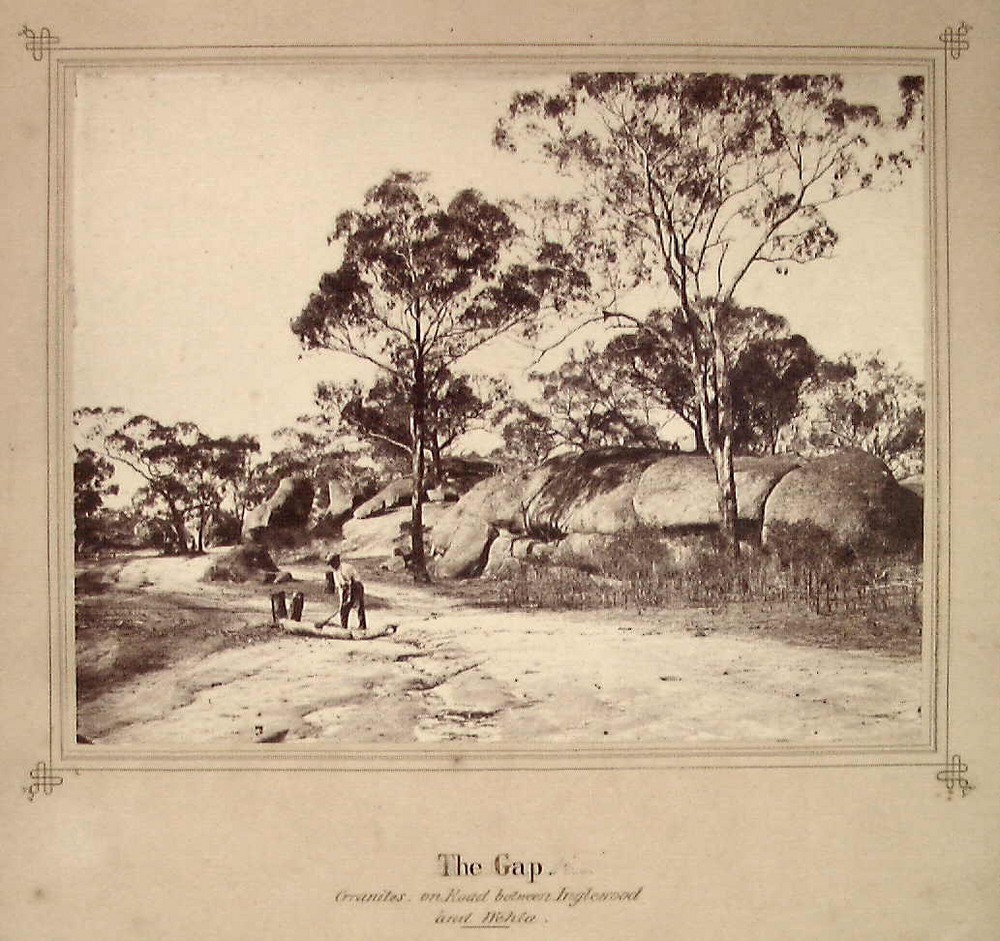
When he reached the Collins’ cottage:
Mrs C went into an inner room and in a few minutes emerged with Esther in a state of great confusion and blushes. We shook hands in silence [and] I invited her to show me the garden.
Why did you not answer my letters, I began.
No answer.
Here are yours I suppose you would like to have them again.
She clutched hold of my arm, gave me one quick look and would have run away but I detained her.
I insisted on knowing why she had not written.
She would tell me bye and bye said she almost crying
– I began to feel all my stern resolutions vanishing.
What had happened was family opposition: Chubb was poor and fourteen years Esther’s senior. She had other suitors: a wealthy squatter, ‘two quartz miners and one Curate after her’. But Esther ‘told her mother that she loved me and would never marry anyone else’. Why had she not written? She had poor education and thought her letters ‘wretched scrawls’.
He stayed a week. On his departure Esther’s dog followed him for miles, the couple secure in their mutual affection. They needed to be, for her family still opposed the match. Chubb suspected them of intercepting his letters.
It took the pair four years to marry. Chubb moved to Melbourne to work as a clerk, but the courtship continued. On Christmas Eve 1868 he took the mail train to Bendigo, then travelled all night by coach to Inglewood, arriving at half-past five in the morning. He walked again to Kingower, stopped for breakfast and a rest, and would have walked all the way to Esther had not a friend with a buggy given him a lift.

Chubb arrived at the Collins family Christmas with a surprise: a marriage license in his pocket. On Boxing Day a clergyman drove from Kingower to marry them. Esther had secretly contrived a wedding outfit: ‘some white flimsy material with a blue ribbon from her hair’. Despite the wait, Chubb claimed ‘Esther and I were as cool as cucumbers. At the end of the ceremony Mrs Collins fainted into his arms: ‘I was in a good mind to drop her.’
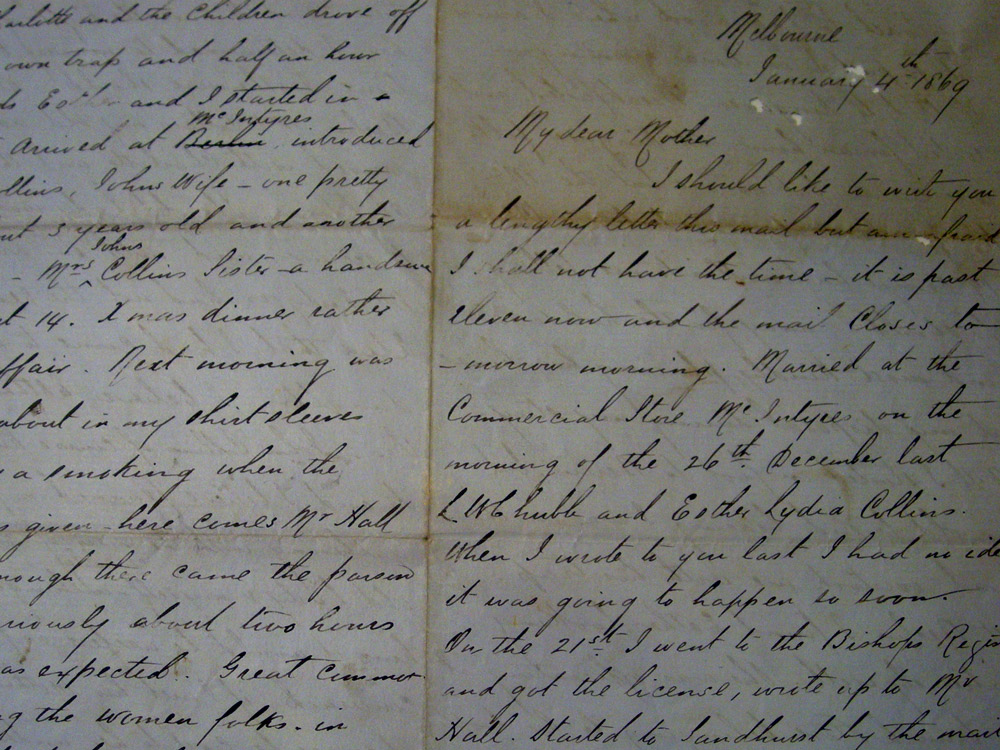
They still were obliged to spend several years apart, partly because Chubb could not support a family through clerking – the separation may have been a contraceptive measure. Finally he got work in mine management. In April 1871 he and Esther finally set up house together in Gippsland. Esther was never very good at writing letters, but the pair had five children and eighteen happy years of marriage. The old-time love story ended with Esther’s death in 1886, aged thirty-nine.
Chubb wrote that they had ‘…no quarrels or differences no tempers or anything of that sort, but one unclouded time of happiness and content.’
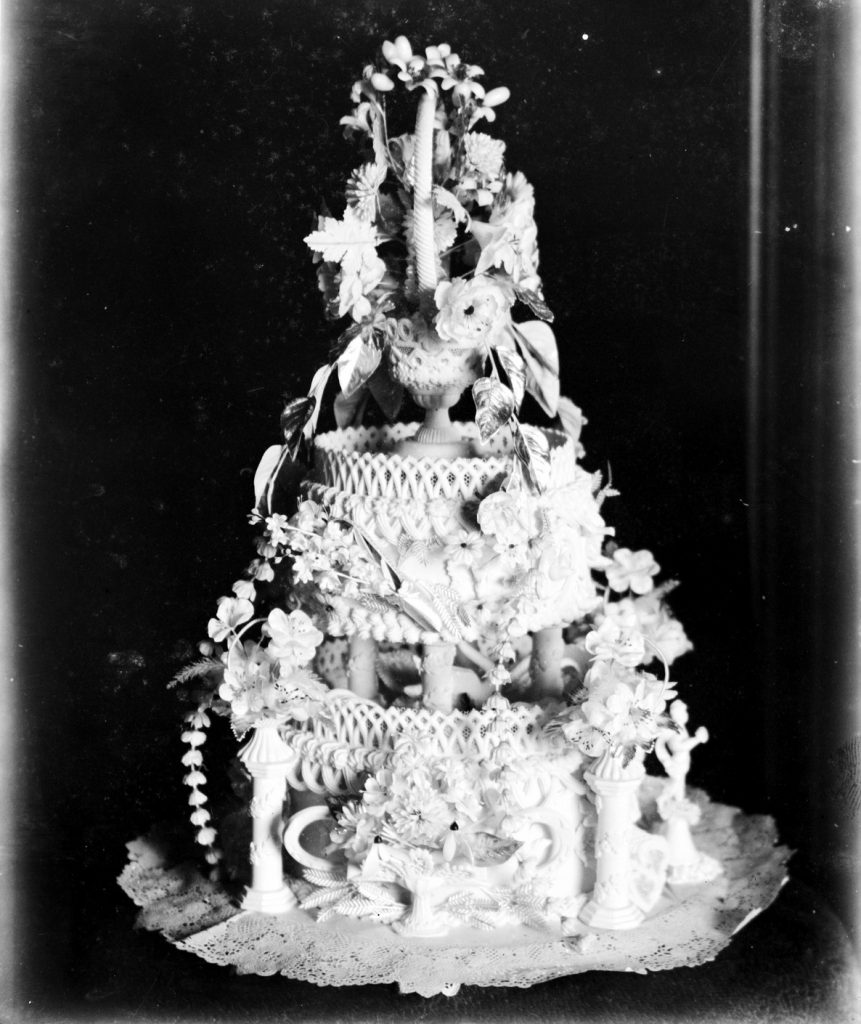
How many married couples could say the same now?
Written by Dr Lucy Sussex, State Library Victoria 2017 Creative Fellow

